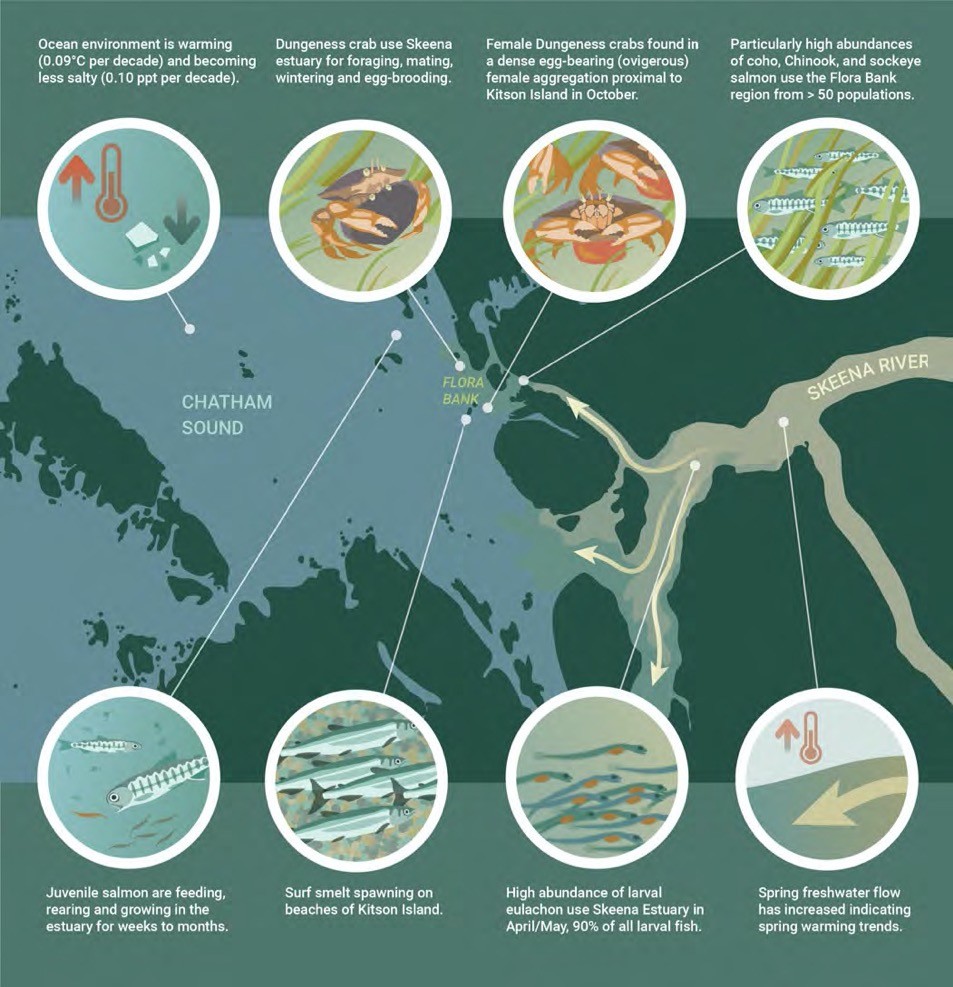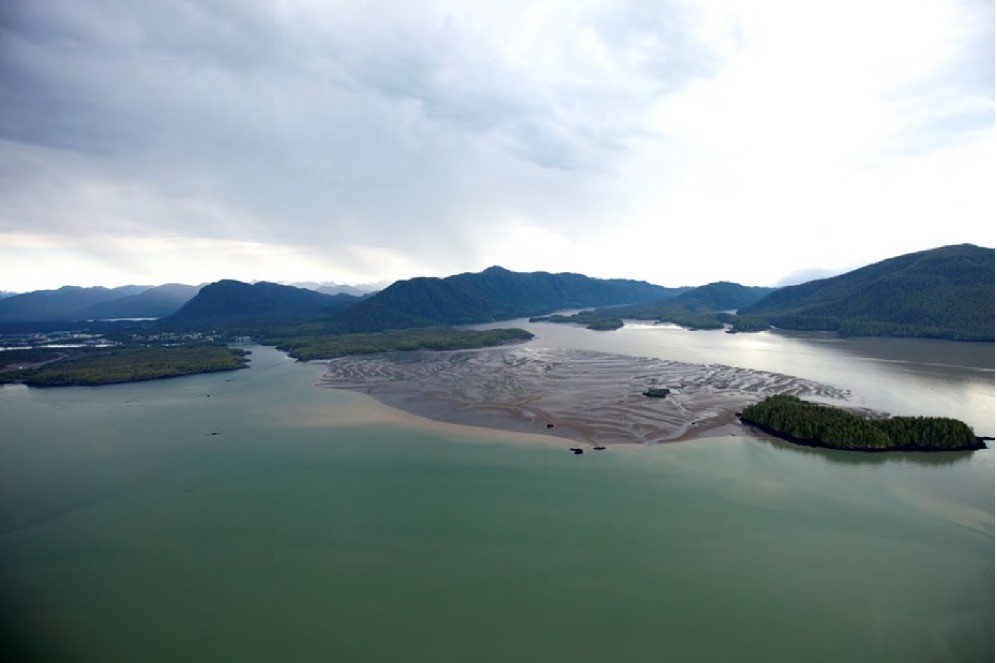A new report on the value and vulnerability of juvenile salmon habitat in northern B.C.’s Skeena River reveals how climate change and development are critically impacting the region. It also provides a historical assessment to help inform the region’s future planning. Collaborators from the Lax Kw’alaams Fisheries Program, the Skeena Fisheries Commission, and Simon Fraser University say proactive stewardship will be key.
The Skeena River is BC’s second-largest-salmon-producing watershed after the Fraser River. Its estuary provides nursery habitat for juvenile salmon, the oil-rich Eulachon (candlefish), Dungeness crab, surf smelt, and Pacific herring.
Lead author Ciara Sharpe, a fisheries biologist working with the Lax Kw’alaams First Nation, says the Skeena River estuary has been poorly studied despite its significant ecological, cultural, and economic importance.
“This report is the first to synthesize historical and recent research on the estuary and its trajectory under climate change,” Sharpe said. “Now this information is out there to provide a scientific foundation for decision-making or planning.”
Impacts of climate change
The report found that over the past 90 years, the amount of freshwater entering the estuary in the spring has increased, likely due to climate change-driven increases in glacial melting and shifts in precipitation patterns.
The ocean waters adjacent to the Skeena River estuary, into which young salmon and Eulachon enter, have also been changing, warming by approximately one degree over the past 80 years.

The report’s co-author, SFU professor of biology and environmental management Jonathan Moore, says that climate change and human development in estuaries is putting stress on the system.
“Estuaries bear the burden of stressors from both the ocean and upstream watershed,” said Moore. “With oncoming climate change, there is a need to think proactively about stewardship and management of estuaries to increase their resilience to this change.”
Skeena River estuary importance for salmon
Five years of sampling fish in the estuary revealed the importance of the Flora Bank region and its eelgrass beds, near the mouth of the Skeena River for young coho, Chinook, and sockeye salmon.
“Each year, as many as 1 billion juvenile salmon may swim through the estuary on their way to the ocean,” said Sharpe. “We discovered that young salmon feed, grow, and reside in these waters for weeks to months. The food and shelter they find likely gives them a boost in growth that improves their chances of surviving to return to the Skeena as adults.”
Genetic analysis revealed that these juvenile salmon come from the territories of 11 First Nations throughout the Skeena and beyond, and some will return home to as adults to support the fisheries of these Nations.
Lax Kw’alaams senior fisheries biologist and paper co-author Katherine Butts says the report also highlights the importance of the estuary for spawning surf smelt, breeding Dungeness crabs and young Eulachon—all important for local food webs and fisheries.
“Coast Tsimshian peoples have managed fisheries resources and the environment for millennia and continue to do so to ensure that as the ocean, river, and land feeds the people,” said Butts. “The Coast Tsimshian people monitor, protect, and enhance them to ensure they are sustainable for future generations.”
Header Image Credit: Brian Huntington.









